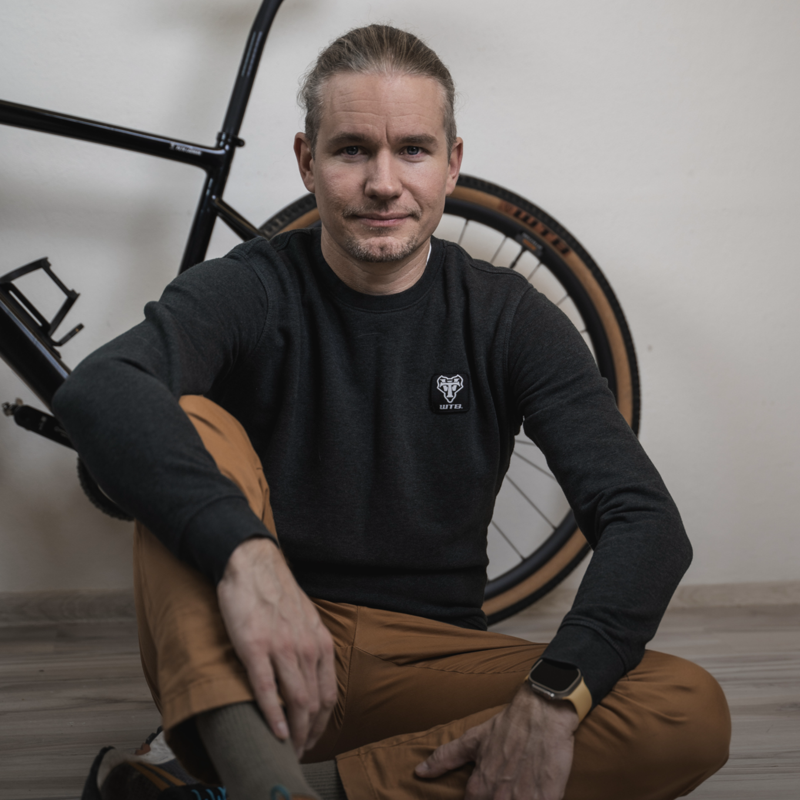This month, we sat down with CIE Board Member Petr Ladman, General Manager at Wilderness Trail Bikes to tell us his thoughts on the future, challenges and inspirations in the cycling industry.
1. Can you give us a brief description of Wilderness Trail Bikes (WTB)?
WTB (Wilderness Trail Bikes) started in 1982, in California USA, as one of the first companies designing and producing components for mountain biking. Back then, this was a new type of cycling sport and was just developing. That means this year we’re celebrating 40 years of invention and innovation. We became one of the leading suppliers of integrated wheel systems, which means tires, wheels or rims and we also produce saddles along with some smaller accessories for all categories of bikes. Currently, WTB has a global presence - worldwide supply chain enables us to shorten the transportation times and distances between our production and our customers. The strategy of local production runs through our veins for many years already. For the last 15 years, WTB has had a direct presence in Europe. We’re located in Pilsen in the Czech Republic which is the famous city of beer still. But we hope that it's going to be a bicycle city soon! From Pilsen we supply our OEM customers and distributors, and we also started here our rim production recently.
2. What cycling trends are you most excited to see by the year 2030? By 2050?
For 2030, it's obviously still going to be e-bikes. I think the growing segment of E-bikes as an assisted motorized vehicle will probably continue developing smaller and lighter systems while being powerful. It's going to be used both for transportation as well as leisure. Hopefully, the trends in battery development and technologies will help to improve their environmental impact in both production and at the end of their lifetime.
And as for 2050… I would like to have a crystal ball, which I don't have, but I'm pretty sure that connected bicycles, connected cities, and connected modes of transportation is something that by 2050 will be very common. It's already being discussed now and is somewhat developed. Being from the central / east of Europe, I'd also hope that by 2050 (I hope much sooner, but latest by 2050) we will see cycling in the cities as a mode of transportation, that is more trendy, more accepted, and that is all around us more than now. In many cities it's still the car that owns the streets and “social status”.
3. What do you see as a major challenge in the cycling industry, and how can CIE play a role in overcoming that challenge?
One recent challenge, which we all are facing, is the supply chain disruption caused by COVID. CIE’s role was very important in those rough times – for example the initiated market study “Bridging the Gap” showed us the trends of purchases and usage of bicycles during and after COVID, and I’ve seen numbers that verified that the investments that we're doing, for instance our rim production in Europe, is the right move. We see that people are going to use the bicycle more often and they want to have it as a part of their everyday transportation or lifestyle. I believe CIE responded very well to this challenge.
A bigger challenge is the ongoing one – making sure that cycling, as an industry, is recognized in people's minds and in politics. Whether it's in Brussels or local authorities, people need to be aware that with bicycle, we have one of the best solutions for the current problems of the world. Look at climate change, the Green Deal, the bicycle is the right solution. It’s where Cycling Industries Europe is doing a tremendous job. Looking at what has changed in the last 5-6 years is unbelievable. We were an industry not many knew it existed, except for the enthusiasts (and the Dutch of course). But thanks to the work CIE this is not the case anymore and we, cycling industries, are now part of EU’s mobility solution. It's certainly an ongoing process, but our industry is best represented.
4. Who or what in the cycling industry inspires you?
Patrick Seidler, the president of WTB. Patrick has been active in the bicycle industry since the early 90s, and has always seen the bicycle as a tool to save the planet. He wants to save the world with bicycles – that’s his motto! His involvement in bicycle advocacy has always been outstanding. Thanks to him, WTB is one of the founding members of many bicycle associations in the United States and in Europe, including Cycling Industries Europe. I really appreciate his vision to produce locally, his leadership, humanity, as well as the spirit that he’s energizing WTB with as a company, which makes it an incredible place to work.
5. Describe in 5 words how cycling is saving the world.
We challenged Petr to tell us in just five words how cycling is saving the world:
